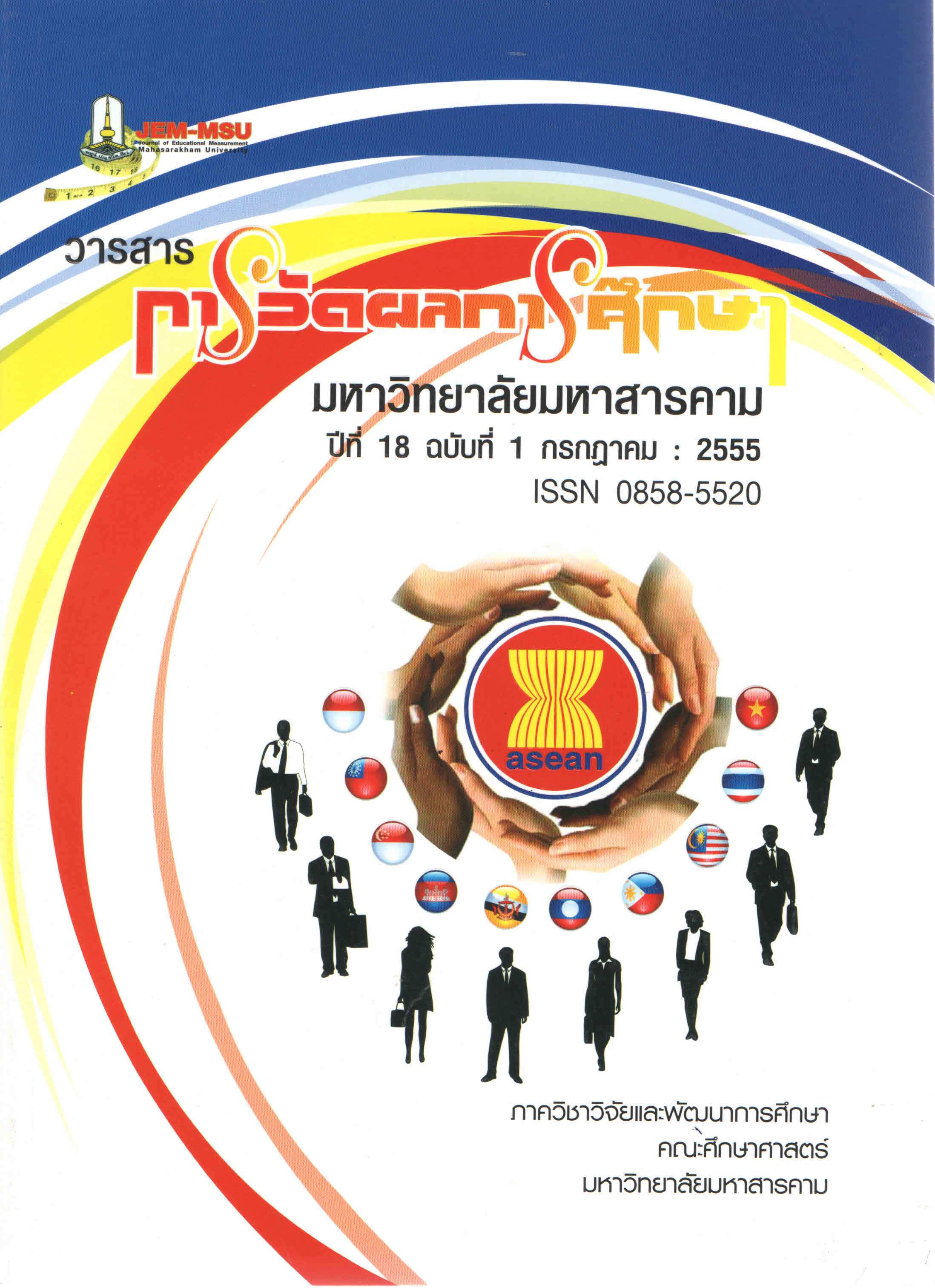A Construction of Computer Scholastic Aptitude Tests Online for Matthayomsuksa 5 Students in Ubonratchathani
Main Article Content
Abstract
The purpose of creating this aptitude test on computer learning is to measure
the ability of students learning computer subjects in the higher secondary level as this
scholastic aptitude test on computer learning. The purpose of this study is to create
a scholastic aptitude test on computer learning for secondary 5 students in
Ubonratchathani province which offers computer subjects in the year 2010.
The sample group consists of 1,220 students. The participants were selected using the
multi stage random sampling and the tests were administered three times. The first
testing required students to do paper pencil testing. The second and third testing were
administered based on computerized testing system for assessment to find out the
validity of the six sub-tests for the second time and check the quality of the test for
the third time through out-of –system testing by identifying the validity, difficulty,
discrimination, reliability and setting of norms of the test created.
The results of the study are as follows. The computer scholastic aptitude test
on computer learning in the higher secondary level for secondary 5 students in
Ubonratchathani province based on related computer tests as investingated by the
researcher created a test that consists of 6 sub-tests namely: numerical aptitude test,
quantitative aptitude test, reasoning aptitude test, analysis aptitude test, metaphoric
aptitude test and verbal aptitude test. The values of difficulty of the tests ranged from
.20 to .80, their discrimination ranged from .21 to .66 and the values of reliability,
as calculated by KR-20 Kuder- Richardson are .86, .89, .91, .93, .94 and .89 respectively.
The content validity was examined by 5 experts to identify the Index of Consistency
(OIC) of the tests created which ranged from 0.60 – 1.00 for every test. The construct
validity using a Known-Group Technique chosen by the advisors to evaluate the 6
sub-tests of the scholastic aptitude test on learning computer namely: numerical,
quantity, reasoning, analysis, metaphoric, verbal showed a value of 13.61, 12.22, 14.84,
12.14, 13.57 and 14.76 respectively. The predictive validity between the GPA of every
sub-tests in the third testing and the gain showed that the learning outcome of basic
computer knowledge is equivalent to 0.18 – 0.41. Normalized T-Score of the 6
sub-tests of the Scholastic Aptitude Test for Computer learning resulted in a score
which ranged from 18-79.
In conclusion, the scholastic aptitude tests that the researcher created are
standardized and appropriate to be administered to higher secondary 5 students in
order to predict each individual student’s ability in the future. The result may be
utilized to continue to improve other scholastic aptitude tests for computer learning.
Article Details
The content and information contained in the published article in the Journal of Educational Measurement Mahasarakham University represent the opinions and responsibilities of the authors directly. The editorial board of the journal is not necessarily in agreement with or responsible for any of the content.
The articles, data, content, images, etc. that have been published in the Journal of Educational Measurement Mahasarakham University are copyrighted by the journal. If any individual or organization wishes to reproduce or perform any actions involving the entirety or any part of the content, they must obtain written permission from the Journal of Educational Measurement Mahasarakham University.

